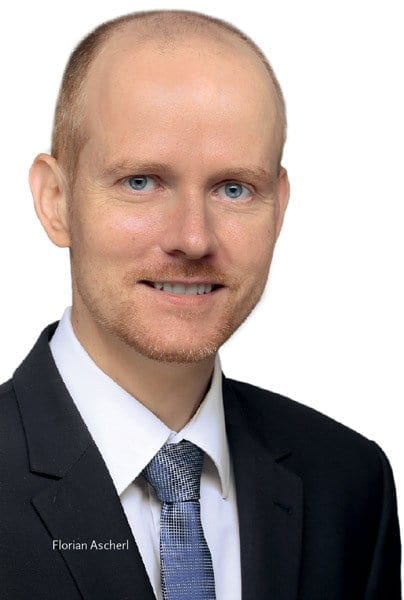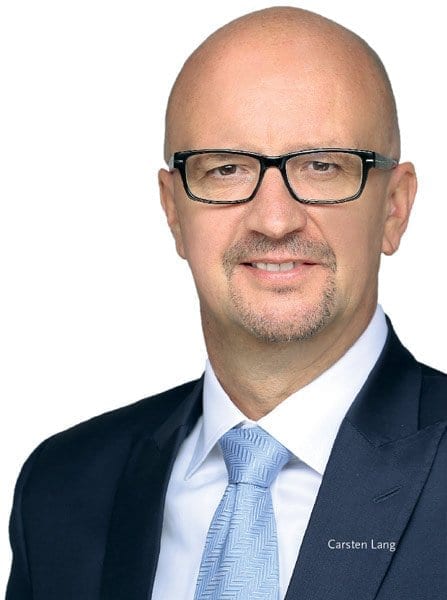IT Asset Management


The definition at the beginning: Which term fits the challenge better - license management or software asset management?
Carsten Lang:
"In the German-speaking world, we've long since moved beyond the term license management, which doesn't begin to describe the responsibilities of the partners entrusted with this task."
Software has long since become one of the largest cost factors in today's organizations, and not only in the SAP community, and has developed its importance as an asset.
 "But instead of software asset manager, I would rather opt for the term 'IT asset manager' here, since not only software, but also services, hardware and other factors also fall within the job profile of an IT asset manager"
"But instead of software asset manager, I would rather opt for the term 'IT asset manager' here, since not only software, but also services, hardware and other factors also fall within the job profile of an IT asset manager"
Lang knows from his professional practice and he adds:
"For the future, I would even see the term IT asset & security manager here, because all forms of threats possible through the use of today's software and technologies find their intersection in this position.
If an organization doesn't know its deployed software, its release and version levels, and patch levels, and if it's unable to identify who has installed unauthorized software on company-owned or hosted devices, it's nearly impossible to identify, let alone control, corresponding gaps."
With R/2 to ERP/ECC 6.0 to S/4, the existing SAP customer sees not only a fantastic increase in functions and business processes, but also an accompanying growth in complexity and networking.
Transparency in IT assets and optimization in the resources used is thus a concern for the entire C-level in the company.
"The area of transparency is where I see the biggest challenge at this point in time"
Florian Ascherl thus emphasizes in the E-3 conversation.
"Responsibility for managing licenses is still fragmented in a large proportion of the organizations I know. The license and software asset manager usually does not - or only recently - bear the responsibility for surveying the SAP system landscape.
In addition, experience shows that he or she has at best a superficial understanding of the processes involved. For the most part, we find responsibility for SAP licenses and measurement in the SAP organizational unit or in corporate IT purchasing.
So managing SAP licenses is a relatively new challenge, even for seasoned managers who now have to deal with the history of price and condition lists, GTCs, software use rights and, if applicable, special licenses and ancillary agreements."
One difference to other software providers is that SAP provides tools for surveying as standard. And KPMG senior manager Ascherl explains:
"But - and this is no fault of SAP's - the best tool that establishes a standard cannot, of course, identify individually agreed contract constructs and usage rights without customizations, and without the ability to learn how to do so functionally."
Practice shows that sometimes heterogeneous license metrics and models are used in the company for one and the same product, about which mostly only those people are informed who have been in the SAP organizational unit for years.
"Transparency, however, is the basic prerequisite for compliance"
defines Florian Ascherl.
"This is the responsibility of the licensee. Compliance, for its part, is the irreplaceable basic prerequisite for successful and sustainable optimization.
On closer inspection, it quickly becomes clear that it would have made sense to establish corresponding functions or license management governance as part of the introduction of the SAP software in order to be able to respond effectively to requirements resulting from the IT strategy."
Contaminated sites
In retrospect, the question is whether governance and compliance are a trigger for a reassessment of the topic of license management.
KPMG partner Carsten Lang comments:
 "With the saturation of the global market, software manufacturers developed the first compliance programs. Governance played a rather insignificant role here.
"With the saturation of the global market, software manufacturers developed the first compliance programs. Governance played a rather insignificant role here.
De facto governance for end customers and outsourcers was the logical consequence of the growing number of manufacturers confronting companies with a plausibility check of their license inventory and the comparison of usage and acquired usage rights."
And Lang goes on to say that the topic has become increasingly important with the evolution of the IT infrastructure. The path is moving from business enablers to business drivers in the form of today's heterogeneous system landscapes with a multitude of software products in use.
Virtualization, cloud and storage technologies, coupled with legal retention, data protection and current security requirements, added to the complexity.
"Twenty years ago, like many of our customers today, I only vaguely knew the business opportunities that came from using SAP software"
Carsten Lang sums up.
"License management or compliance was actually not a sustainably pursued goal at that time for any customer or manufacturer that I know of. However, in my opinion, this results from the organizational structures at that time and the focus of the users on the strategic business goal and their own core competencies. Technology was at best a means to an end here."
The targeted use of software to support one's own business activities and to increase internal efficiency was just becoming a growth topic. Deals were as much a prestige issue for sales representatives as they were for the person who was able to successfully complete a major implementation project in an organization.
"The technical possibilities at that time, which were used in the context of predominantly homogeneous system landscapes, can almost be classified as prehistoric compared to today"
Carsten Lang explains the development.
"SAP systems, with their all-encompassing portfolio of business capabilities, have been the ideal front end for customers to tackle the move towards automation and business process control.
There just wasn't time, so to speak, to think deeply about licenses, let alone establish an appropriate organization and structures."
The KPMG Way
What does KPMG recommend: What is the best possible licensing strategy for compliance, transparency and optimization?
"Time and time again, I find in customer situations that the root cause of risks in handling licenses, whether it's SAP or other licenses, can be found in a lack of governance structures"
Florian Ascherl knows from numerous conversations with customers.
The step model shows the following: no transparency without governance, no compliance without transparency, and no optimization without compliance.
"The origin of all potential disagreements lies in the issue of establishing appropriate processes and structures, which was discussed at the outset and has often been neglected in the past.
This is rooted in the evolution of the technical infrastructure as we know it today and the shift from software as a supporting work tool to a key business asset."
What's next?
"If you don't know the existing license agreement structures or your contacts within your company that manage the course of a software lifecycle, you should generally consider establishing a governance model"
recommends KPMG senior manager Ascherl.
"This is also the only way the CIO can get the information he needs to efficiently pursue his IT strategy and ensure compliance and cost efficiency.
Basically, we advise every customer to objectively assess themselves and benchmark against competitors to identify whether full license management is necessary.
For smaller companies, it would be advisable to draw up 'pin to your desk' rules that employees must adhere to or, alternatively, to look for a partner who can take over certain activities and support them with specialist knowledge.
These high-level rules can already help contain massive licensing risks. Otherwise, we're happy to answer questions and help customers fit into a maturity model and design a suitable, cost-effective strategy."
The topic of underlicensing, overlicensing and relicensing is ubiquitous in the SAP community. What is to be done?
"Our recommendation is to always look at the contracts signed with SAP at the beginning"
Florian Ascherl explains the first pragmatic step.
If special rights have been agreed, for example configurations or (partial) decommissioning rights, it is of course up to the respective customer to make use of this right.
It is advisable to keep the future IT and corporate strategy in mind:
"Is there a way to reuse the unused licenses elsewhere? Are there rollouts coming up for which the licenses can be used to save on future purchases? If there is no possibility of use, I tend to advise customers to discuss with SAP to what extent existing license rights that are potentially unused in the future can be used for the implementation of planned strategic IT projects"
advises KPMG senior manager Ascherl.
The decision on the possibility and scope of crediting ultimately lies with the licensor in each case.
"Unlike many other vendors, SAP has been extremely customer-focused in the cases I've seen."
Florian Ascherl knows from his contacts with SAP.





